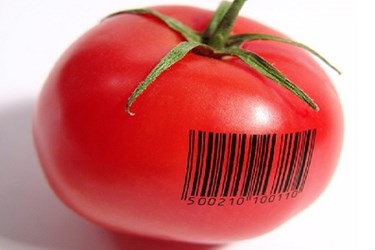Serialization: One Of The Best Ways To Protect Your Supply Chain, Brand, And Customers

By Sam Lewis

For food manufacturers and processors, product recalls, problems with inventory, and other supply chain mishaps are an absolute nightmare. These misfortunes lead to lost revenue, present a threat to a company’s financial value, endanger consumers, and negatively impact your customers’ loyalty to your brand. Fortunately, by implementing serialization solutions, food companies can quickly and intelligently respond to these adversities.
Food makers across the globe are facing the same pressures and challenges — stringent regulations, product counterfeiting and authentication, contaminated products, and increasingly-demanding consumers wanting to know the journey of their food, among a slew of many others. Because of these struggles, food companies must collect better traceability data at every link in their supply chains and put it to immediate and good use.
Every food company stresses the importance of managing its risks, improving its supply chain visibility, and optimizing it processes. However, because of the global nature of today’s food supply chain, the data collected and shared is sometimes not enough to manage all the risks. Basically, no matter how tight of a ship your company runs, recalls and other supply chain-related events are likely to occur. There may be no avoiding them, but you can improve your response processes, and serialization technology may be the key to doing so.
Serialization is a means of distinctly identifying food products in the supply chain down to the individual item level. This can be done using barcodes or RFID tags accompanied by sensors or devices along the supply chain that read the unique barcodes/RFID tags and send gathered product information back to a central database. This database feeds information to a serialized management system that directly connects you with business processes that require signal data and helps companies manage and integrate all serialized data. This data can be used for several purposes, including:
- Recall Management — contaminated products or those not adhering to quality standards present numerous problems for food makers. By narrowing the recall down to the product level rather than the batch level, the event’s impact on the company, as well as time spent managing it, can be reduced. Additionally, the brand’s image can be improved, sometimes even saved, by reducing the number of products being recalled.
- Real-Time Alerts — data gathered by serialization can be used to alert the correct people when processes are not going according to plan. When food makers know something went wrong early in their processes, a wider range of solutions to solve the problem are available. This reduces costs and production errors, and in time, can help predict problems before they occur.
- Process Enhancements — analyzing captured data can be used to enhance end-to-end processes, reduce the amount of time products spend in storage, and avoid unnecessary product handling. This benefits food makers by reducing cycle times, improving product quality and product handling procedures, and boosting productivity.
- Managing Product Shelf Life — obviously, no food product comes with an eternal shelf life. Serialization can be used to determine a food product’s expiration dates, which products to be used first at retail, and which date a product can no longer be sold. This process requires the cooperation of multiple supply chain partners (e.g., warehouses, distribution centers, retailers) to acquire, review, communicate, and proceed with actions regarding food shelf life data. By doing this, the number of undesired products can be reduced and fewer products returned.
- Supply Chain Forecasting — data collected by serialization allows for inventory levels to become more visible, accurate, and timely. Having that kind of data increases food manufacturers’ efficiency across their supply chains by being able to predict where products must be shipped, when they must be shipped, and how much product is needed.
It’s undeniable that this technology has numerous benefits for food companies. When food producers, manufacturers, and processors increase their understanding of their supply chains, they’re better able to isolate problems and affected products, which, ultimately, helps their bottom line.
The real problem for food makers investing in serialization technology lies in ROI. Tracing products down to the individual item level is an expensive endeavor that many companies, especially smaller ones, may be apprehensive to execute. When confronting the issue, companies should seek to determine if the cost of investment can be recouped quickly through fewer product recalls, improved product quality, and boosting consumer confidence and experience with food products. If these items are seriously considered, and “yes” is the answer to each element, investment in serialization is a no-brainer.
